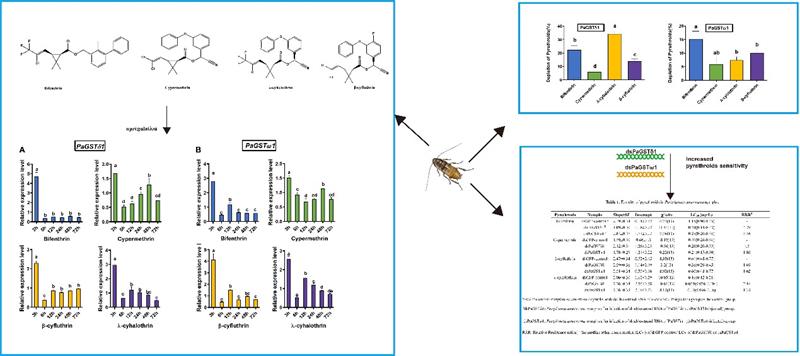Recently, Modern Plant Protection Team from our college, has made new progress in the study of detoxification metabolism of insecticides in the American cockroach based on AI technology, and published a research paper titled "Two glutathione S-transferases, PaGSTδ1 and PaGSTω1 are involved in pyrethroids detoxification in the American cockroach, Periplaneta americana" in the journal "Entomologia Generalis". Doctoral students Sun Hong and Li Xinyu, along with young faculty member Li Yifan, are the co-first authors of this paper. Profs. Zhang Yalin and Liu Jiyuan are the co-corresponding authors.
The American cockroach is one of the most common cockroaches, carrying various pathogens to spread diseases and contaminate food, thus endangering public health and human well-being. Pyrethroids are the most commonly used insecticides to control American cockroaches, but little is known about the detoxification mechanism of the American cockroach against pyrethroids.
This study identified two highly expressed glutathione S-transferases (PaGSTδ1 and PaGSTω1) in the American cockroach. The expression levels of these two enzymes were found to be significantly upregulated after exposure to 4 types of pyrethroid insecticides (deltamethrin, cypermethrin, bifenthrin, and fenvalerate). Knocking down these genes using RNAi increased the sensitivity of the American cockroach to these insecticides. It was also demonstrated that recombinant forms of these two proteins can bind to and metabolize pyrethroid insecticides, revealing that PaGSTδ1 and PaGSTω1 are involved in the detoxification metabolism of pyrethroid insecticides in the American cockroach.
This study for the first time reveals the important roles of glutathione S-transferases PaGSTδ1 and PaGSTω1 in the detoxification metabolism of pyrethroid insecticides in the American cockroach, providing a theoretical basis for understanding the detoxification mechanism of the American cockroach against insecticides. It suggests that overexpression of PaGSTs can serve as a molecular marker for monitoring resistance to pyrethroids and recommends rotating the use of fenvalerate and other insecticides in the control of cockroaches to avoid the development of resistance.

PaGSTδ1 and PaGSTω’s detoxification function against pyrethroid insecticides
This research was supported by the National Natural Science Foundation, the Fundamental Research Funds for the Central Universities, Key Research and Development Projects of Shaanxi Province, and the Science and Technology Planning Project of Yangling Demonstration Zone.
Original link: https: //doi.org/10.1127/entomologia/2023/2006